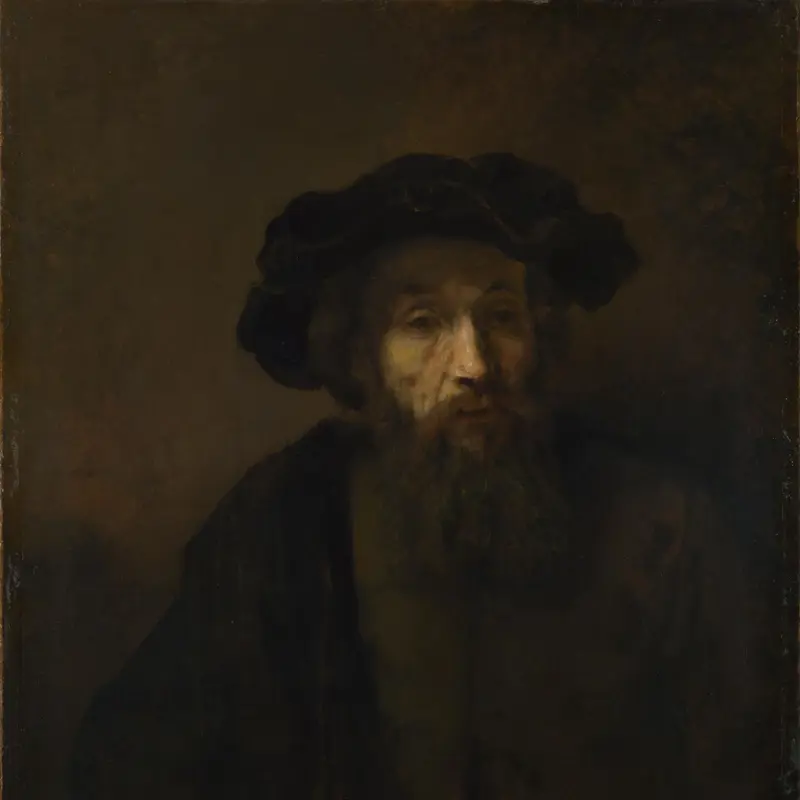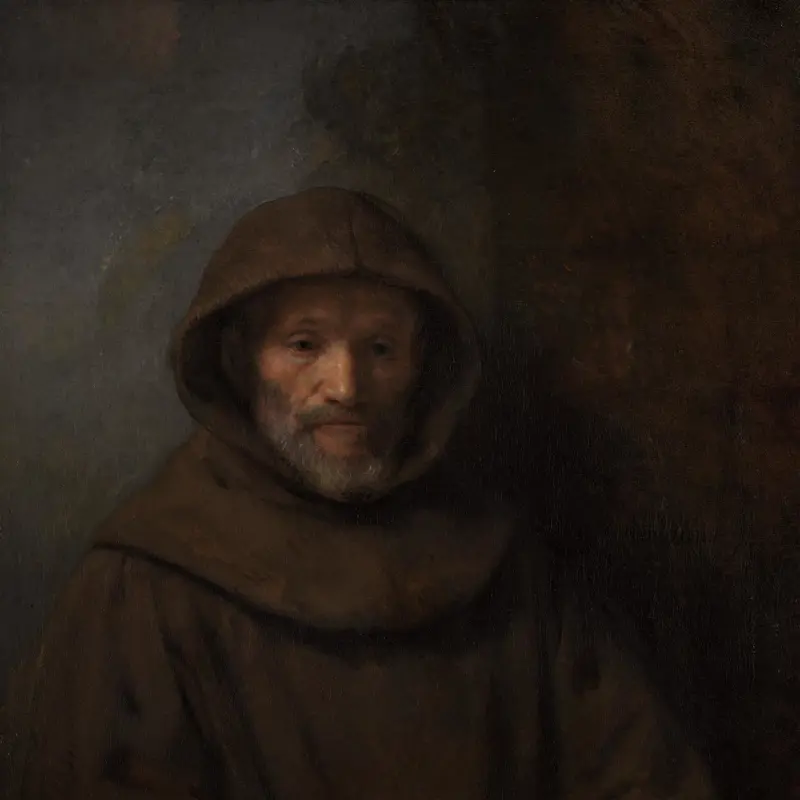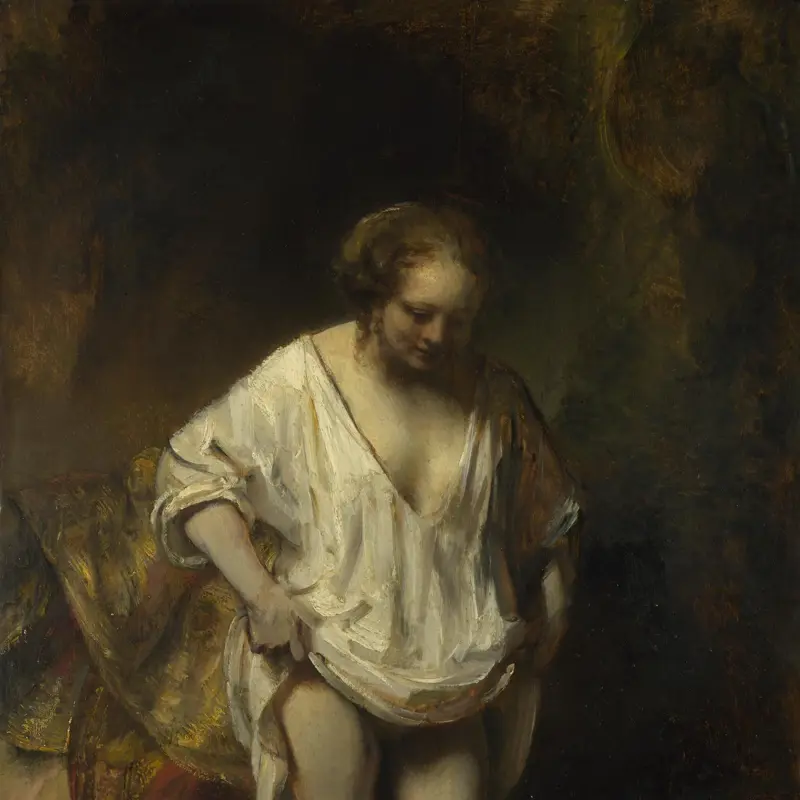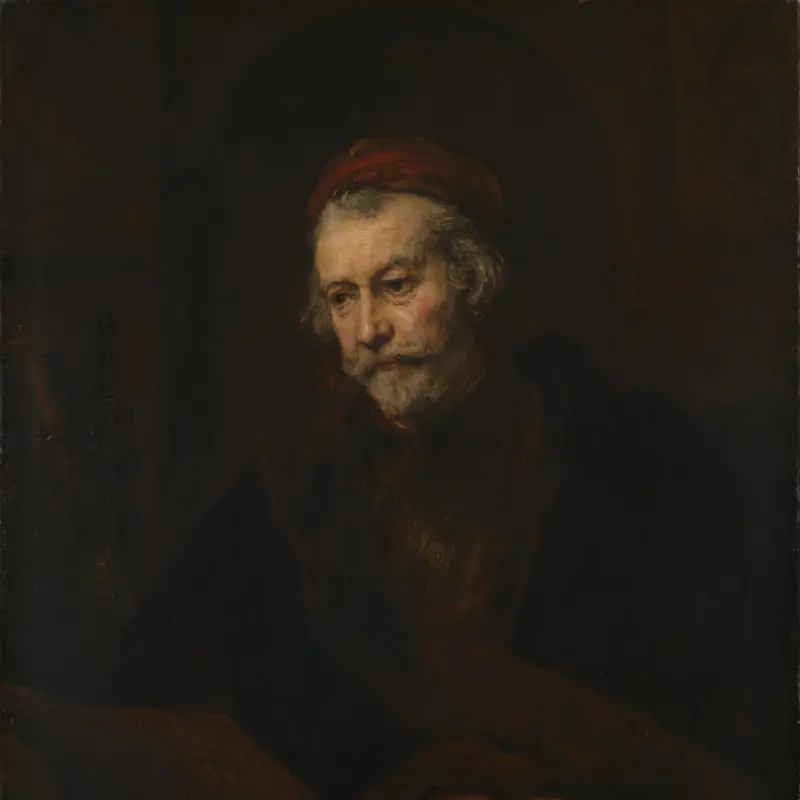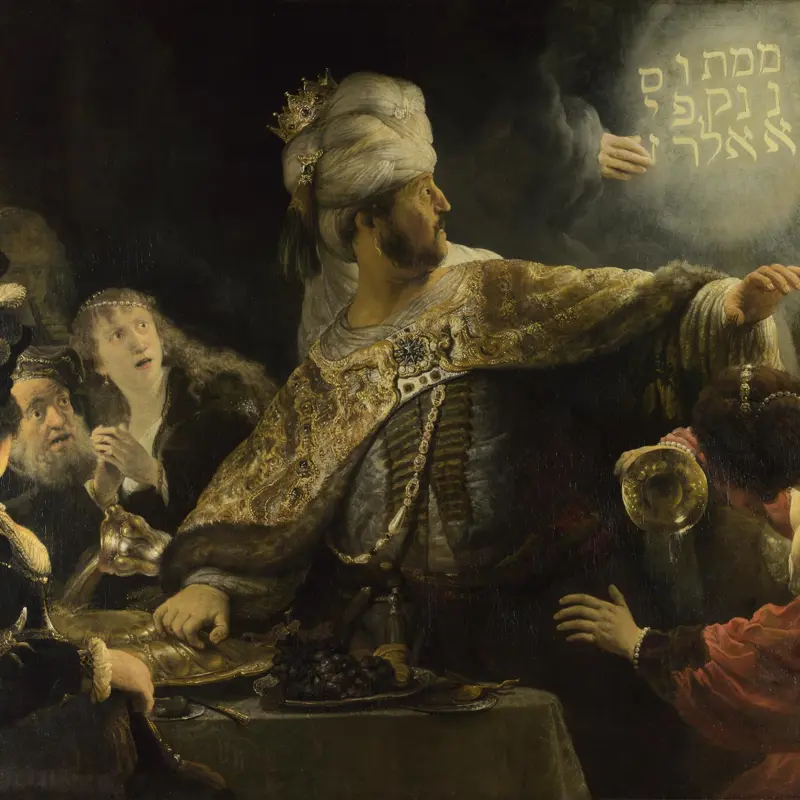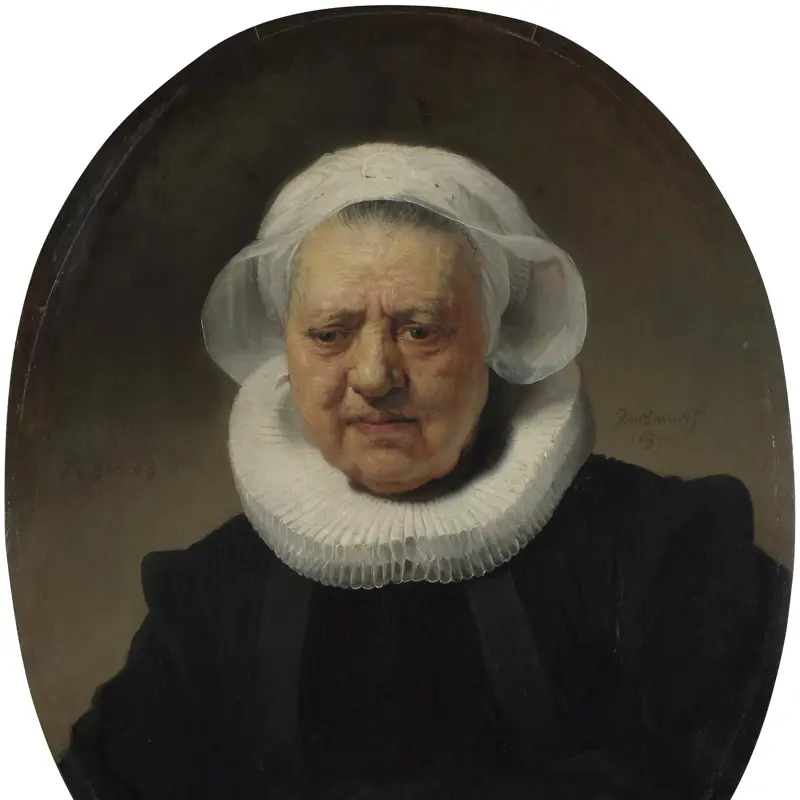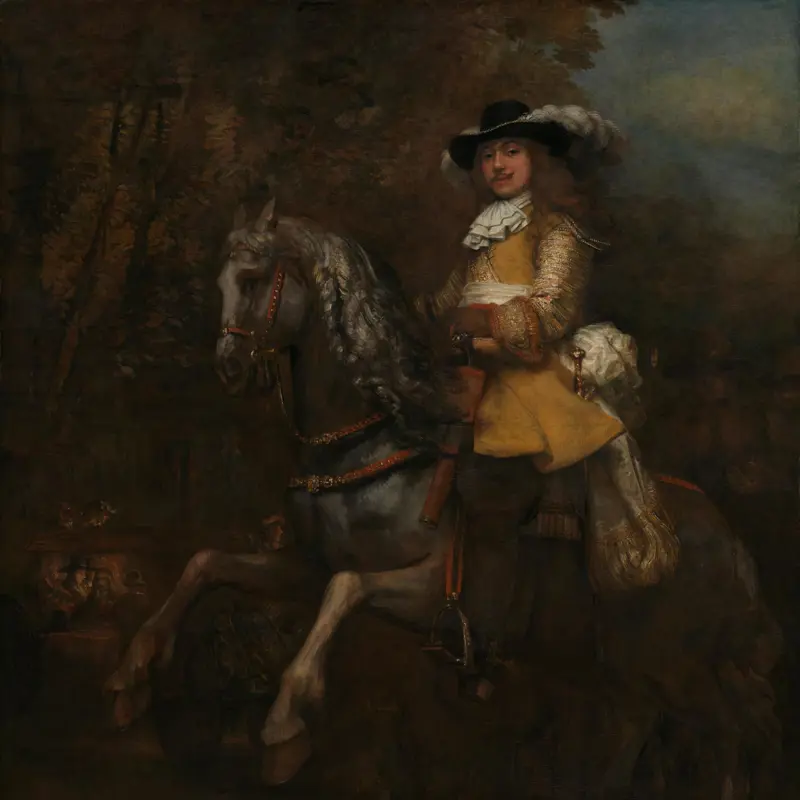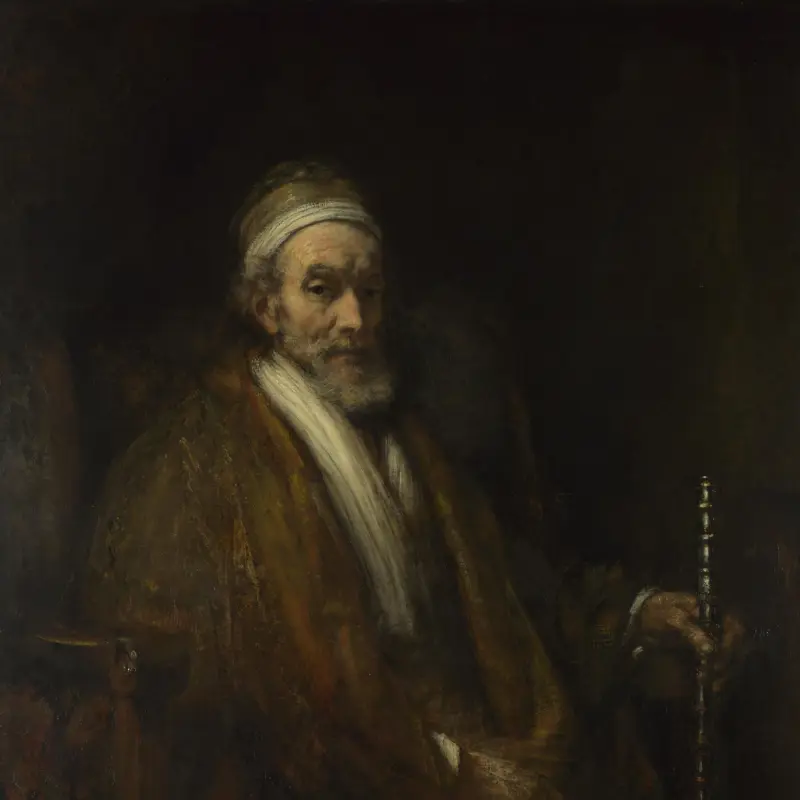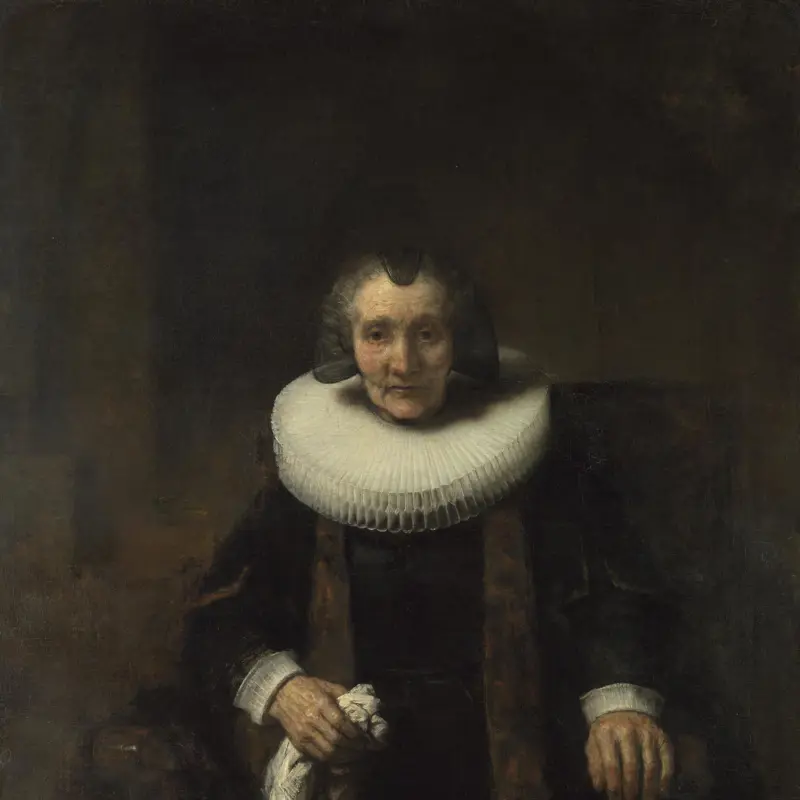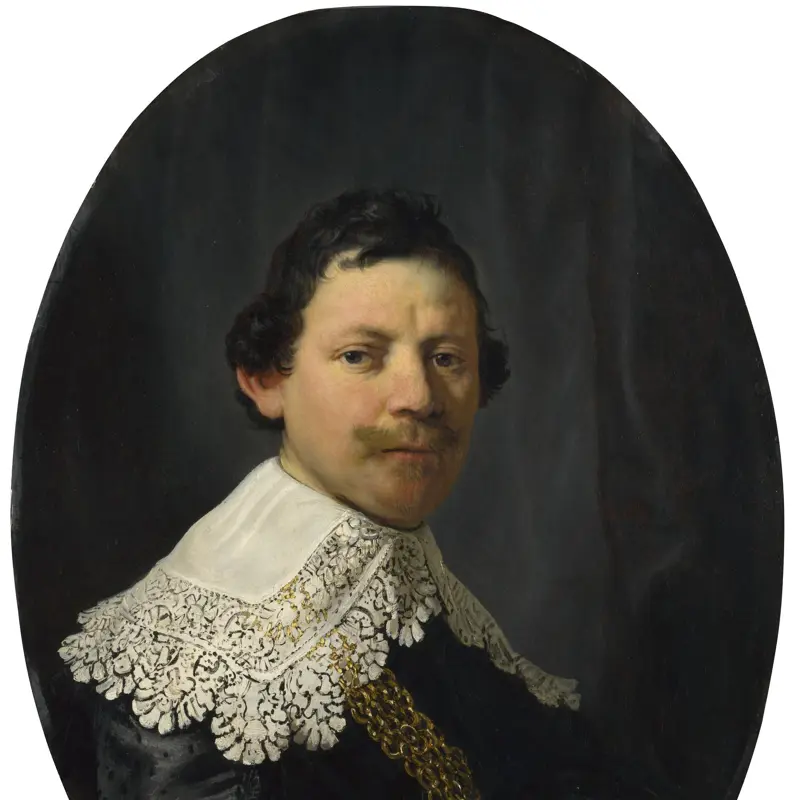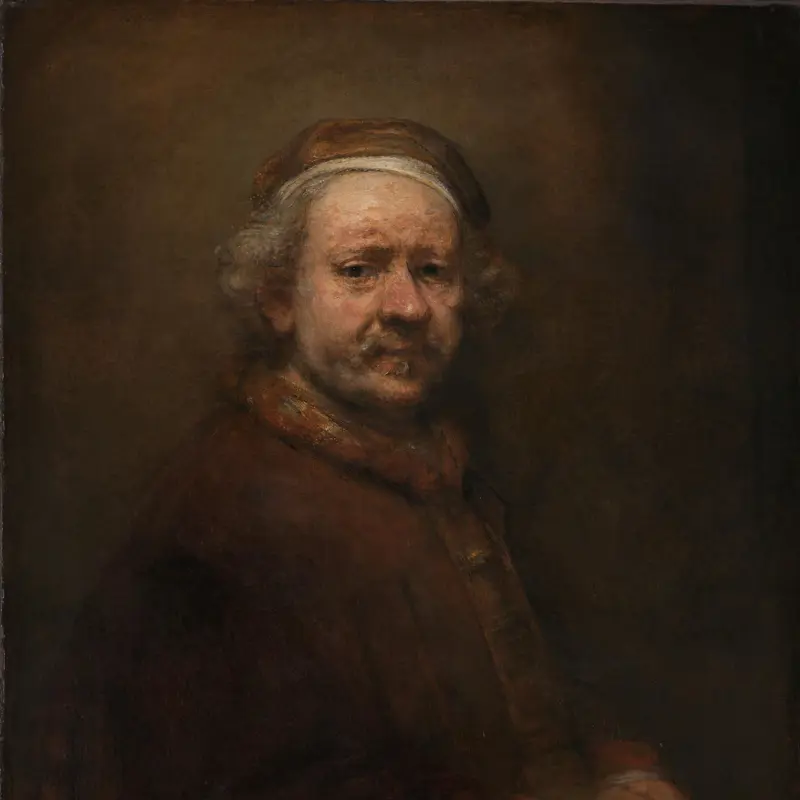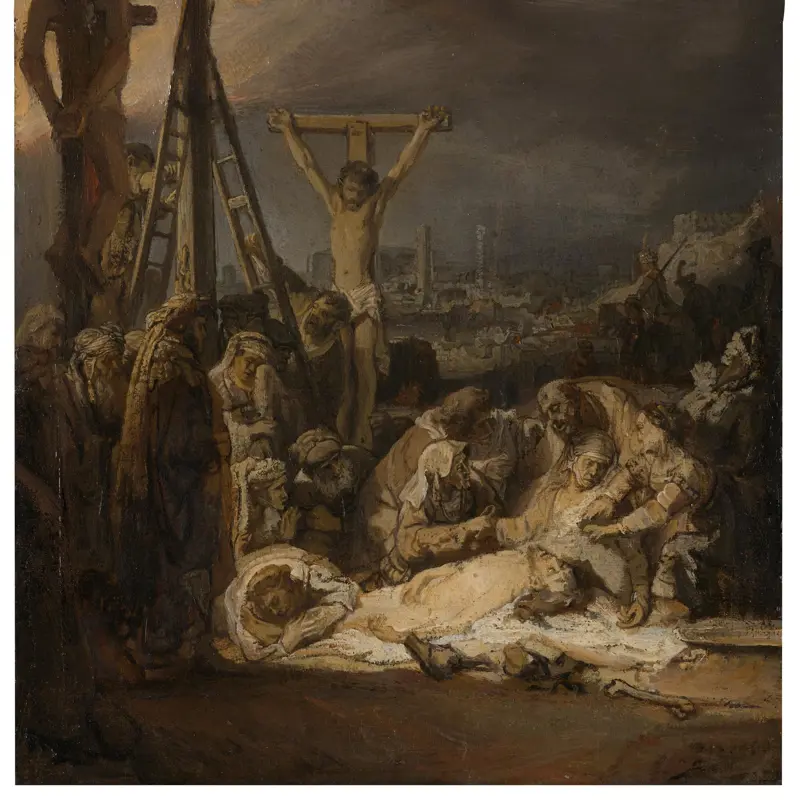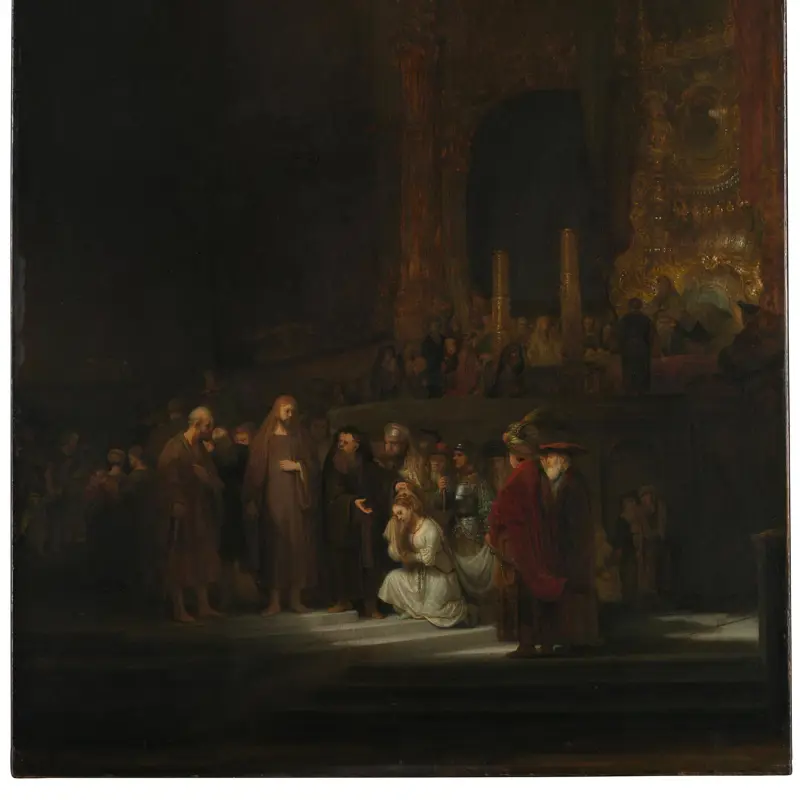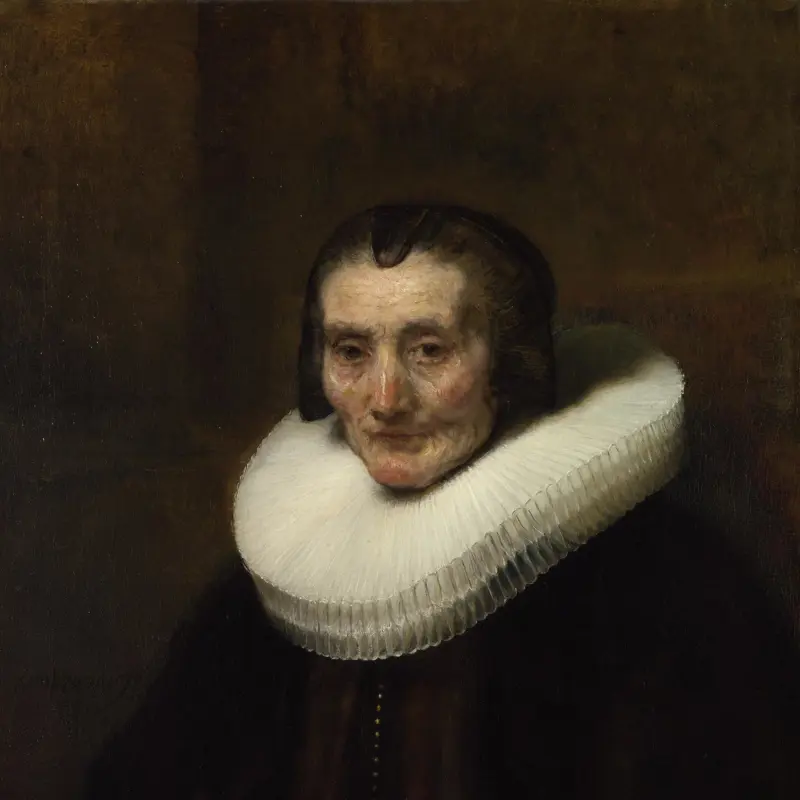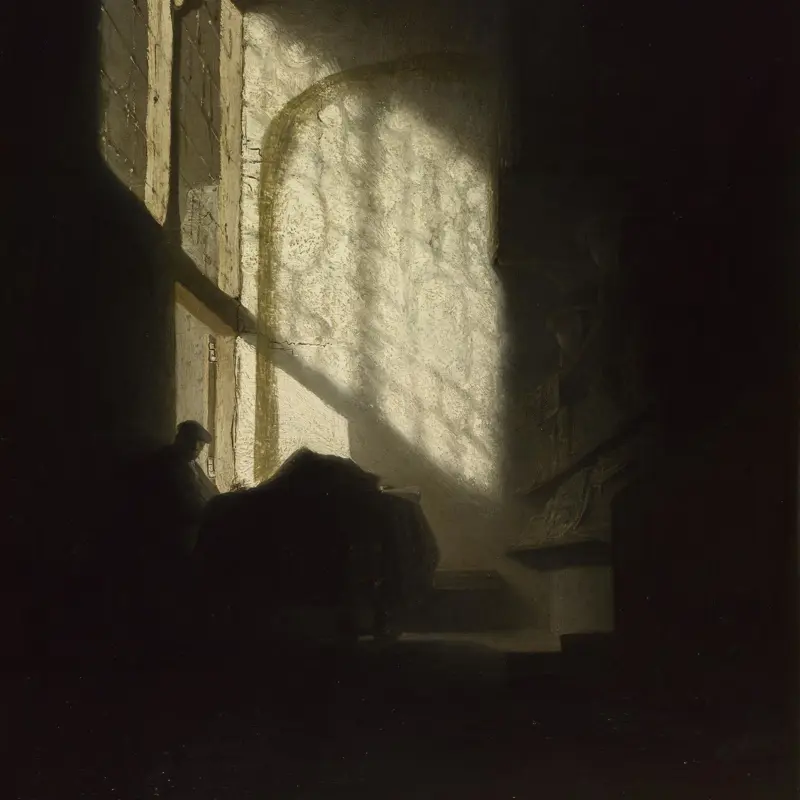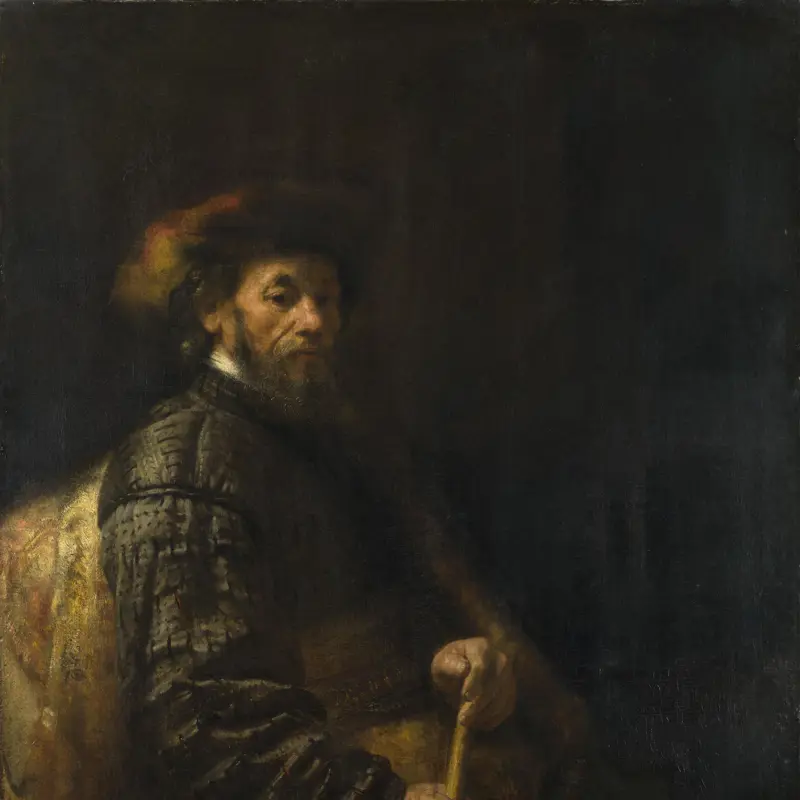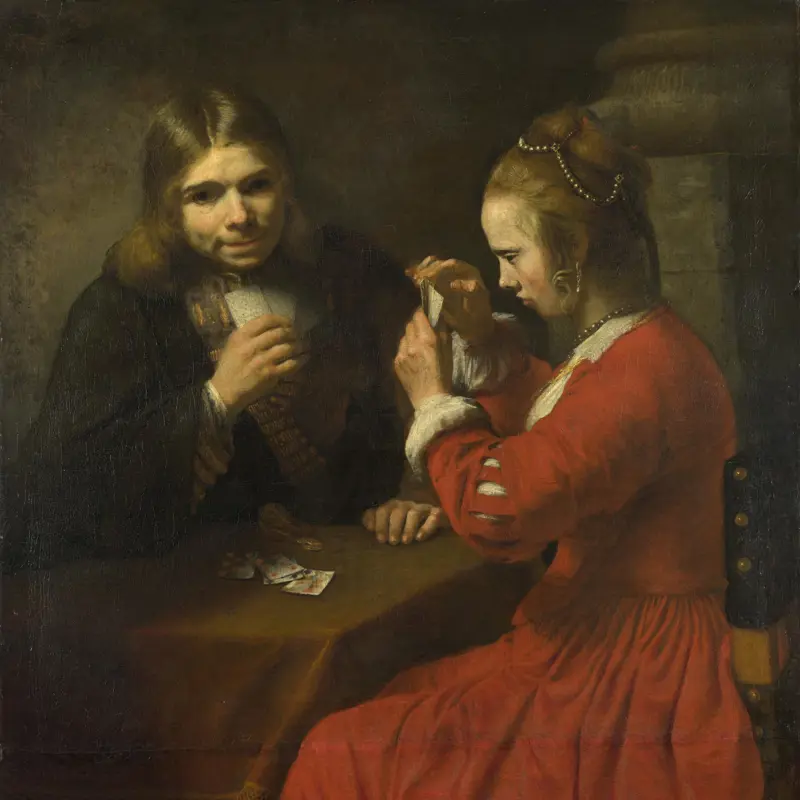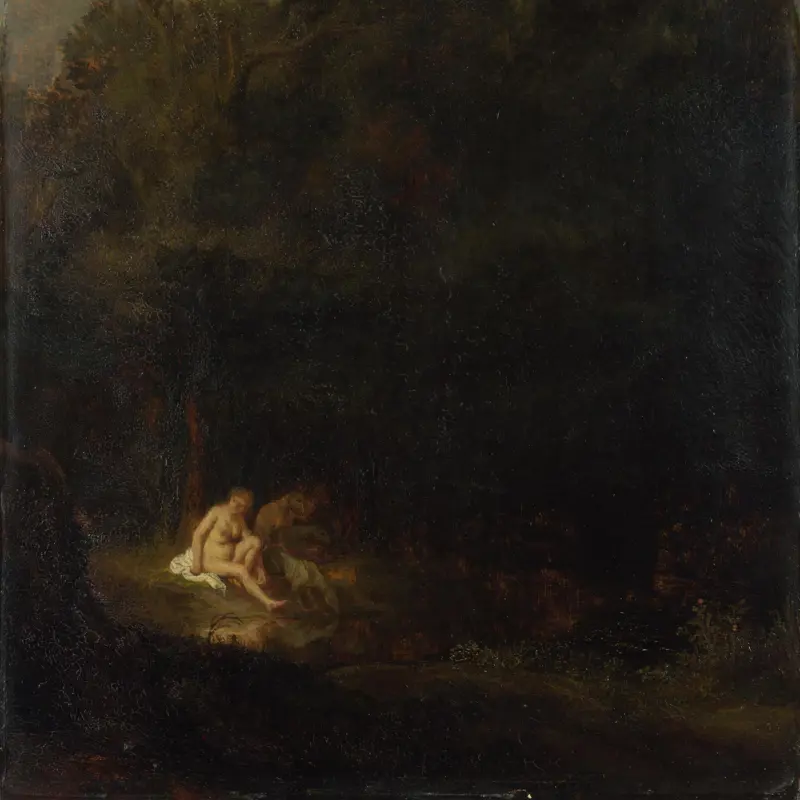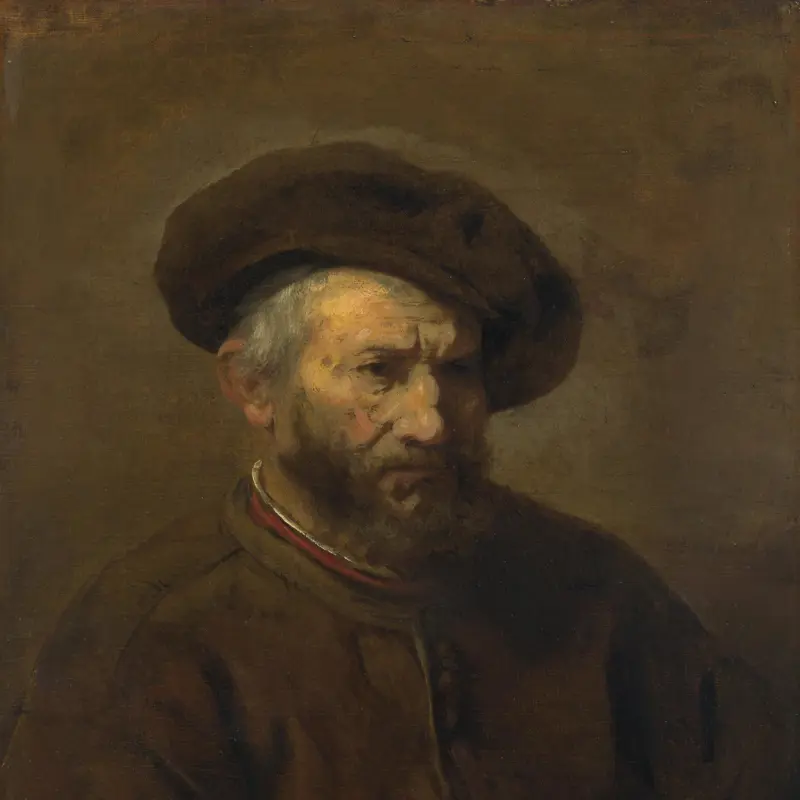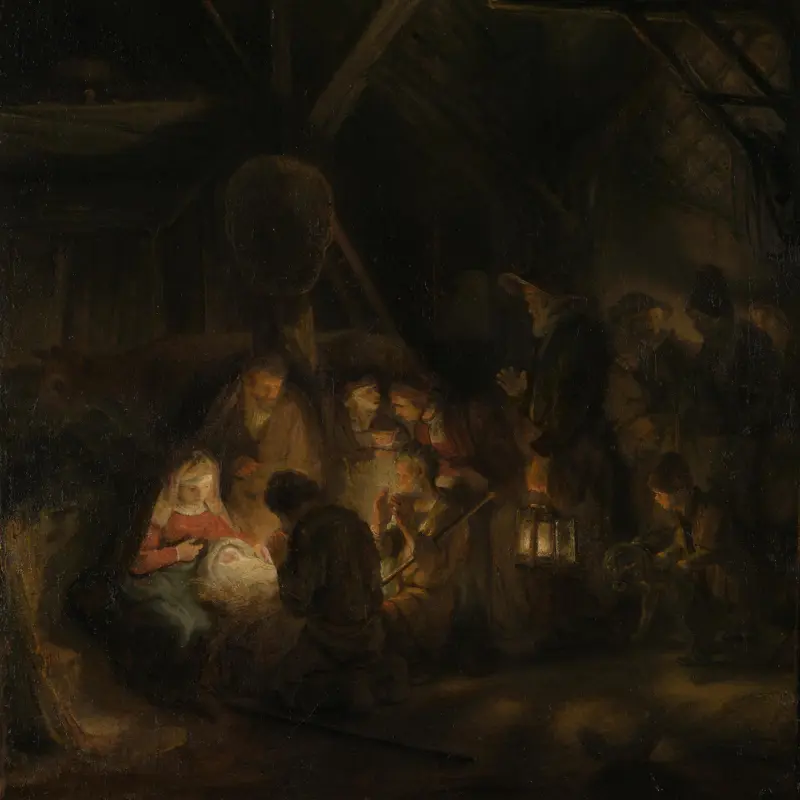Gerrit Lundens, after Rembrandt, 'The Company of Captain Banning Cocq ('The Nightwatch')', after 1642
About the work
Overview
This is an early, small-scale copy of one of the world’s most famous paintings, Rembrandt’s The Night Watch of 1642 (Rijksmuseum, Amsterdam). Rembrandt’s commission was to paint a huge group portrait of musketeers under the command of Captain Frans Banning Cocq. At the time, companies of volunteers like these, known as militia groups, were an important part of the defence arrangements for Dutch cities. Membership and leadership positions were held in high esteem.
This picture is far smaller than the original – about 0.5 square metres compared with nearly 16 square metres – but it is a vital historical document. It records details which were lost when The Night Watch was cut down on all sides, probably in 1715. The two men and a child on the extreme left no longer appear in Rembrandt’s painting, and the National Gallery copy also shows more of the drummer on the right.
Key facts
Details
- Full title
- The Company of Captain Banning Cocq and Lieutenant Willem van Ruytenburch ('The Nightwatch')
- Artist
- Gerrit Lundens, after Rembrandt
- Artist dates
- 1622 - 1683?; 1606 - 1669
- Date made
- after 1642
- Medium and support
- oil on wood
- Dimensions
- 66.8 × 85.4 cm
- Acquisition credit
- Bequeathed by the Revd Thomas Halford, 1857
- Inventory number
- NG289
- Location
- On loan: Long Loan to the Rijksmuseum (2023 - 2026), Rijksmuseum Amsterdam, Amsterdam, Netherlands
- Collection
- Main Collection
- Previous owners
Provenance
Additional information
Text extracted from the ‘Provenance’ section of the catalogue entry in Neil MacLaren, revised and expanded by Christopher Brown, ‘National Gallery Catalogues: The Dutch School: 1600–1900’, London 1991; for further information, see the full catalogue entry.
Exhibition history
-
1958Long Loan to the Rijksmuseum (1958 - 2012)Rijksmuseum Amsterdam25 June 1958 - 1 May 2012
-
2012Long Loan to the Rijksmuseum (2012 - 2015)Rijksmuseum Amsterdam2 May 2012 - 3 May 2015
-
2015Long Loan to the Rijksmuseum (May 2015 - May 2017)Rijksmuseum Amsterdam4 May 2015 - 3 May 2017
-
2018Long Loan to the Rijksmuseum (2018 - 2023)Rijksmuseum Amsterdam2 May 2018 - 1 February 2023
-
2023Long Loan to the Rijksmuseum (2023 - 2026)Rijksmuseum Amsterdam2 February 2023 - 1 February 2026
Bibliography
-
1960Maclaren, Neil, National Gallery Catalogues: The Dutch School, 2 vols, London 1960
-
1991Maclaren, Neil, revised by Christopher Brown, National Gallery Catalogues: The Dutch School, 1600-1900, 2nd edn (revised and expanded), 2 vols, London 1991
-
2001
C. Baker and T. Henry, The National Gallery: Complete Illustrated Catalogue, London 2001
About this record
If you know more about this work or have spotted an error, please contact us. Please note that exhibition histories are listed from 2009 onwards. Bibliographies may not be complete; more comprehensive information is available in the National Gallery Library.

